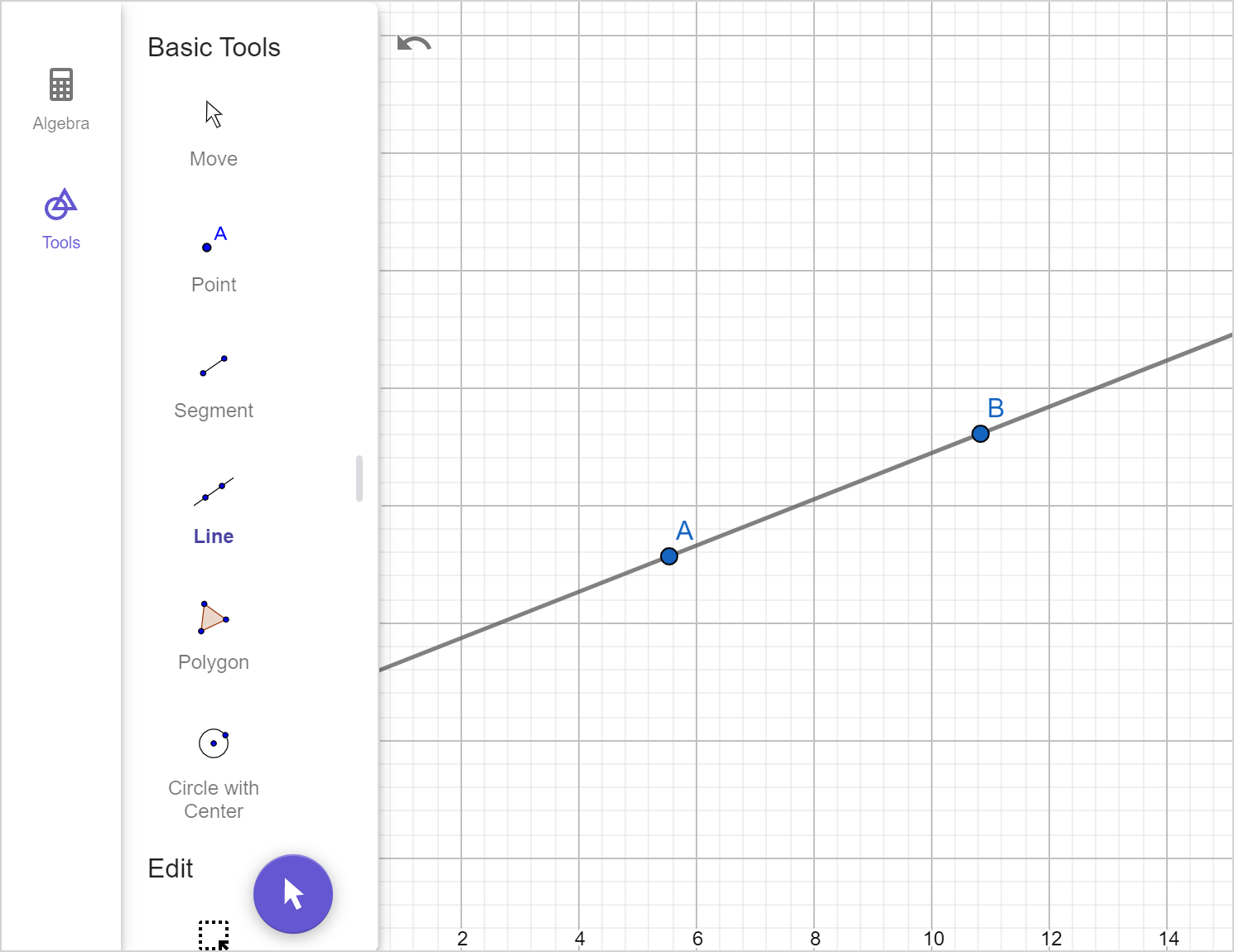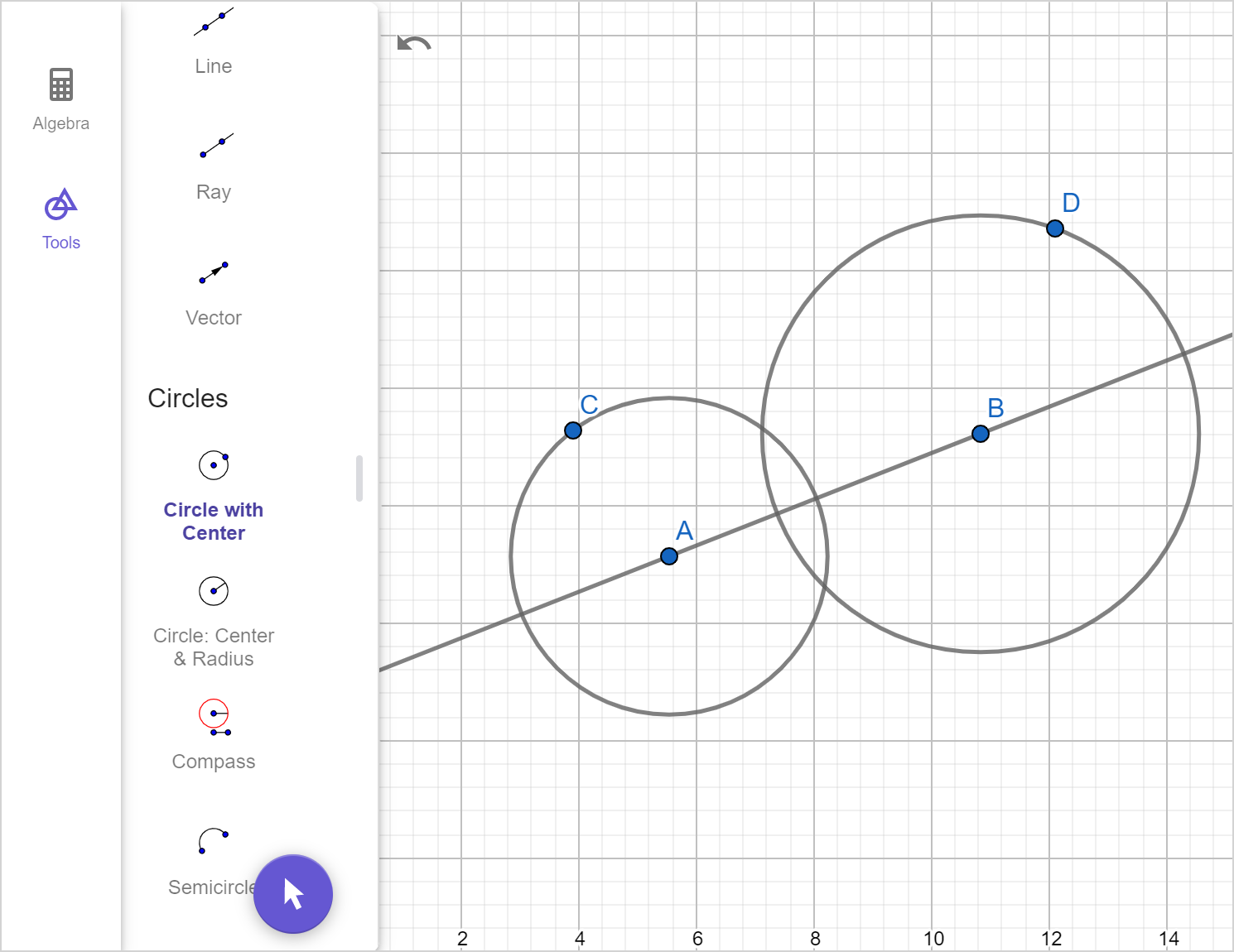2.03 Perpendicular lines
Introduction
In lesson 2.02 Proving lines parallel , we used angle relationships to prove that lines are parallel to each other. We will use angle relationships and other theorems here to prove that lines are perpendicular to each other and construct perpendicular lines here.
Proofs and constructions of perpendicular lines
Exploration
Drag points A, B, and P to change the lengths.
- What relationships in the diagram are always true? Can you explain why?
A point, line, or ray that is perpendicular to a line segment at its midpoint is a perpendicular bisector.
To construct a perpendicular line, we can use the following method:
Choose two points on a given line.
Construct an arc centered at one of the points.
Construct an arc centered at the other point, such that this arc intersects the arc constructed in Step 2 at two distinct points.
Plot points where the two arcs intersect. Here we have used A and A'.
Construct the line \overleftrightarrow{AA'}. It is perpendicular to the line constructed in Step 1.
If we want the perpendicular line to pass through a particular point, we can adjust the radii of the compass so that both arcs pass through that point.
Examples
Example 1
Recall that the Pythagorean theorem states that given a right triangle, the square of the length of the hypotenuse is equal to the sum of the squares of its legs lengths.
Prove the perpendicular bisector theorem.
Example 2
Construct a proof of the following:
Given: m \angle1 = m \angle 2
Prove: l \perp m
Example 3
Ludek is creating a shirt design on his computer. He wants to include some perpendicular lines as part of the design, but the program he is using doesn't measure angles so he can't construct them directly using a right angle.
The program Ludek is using can construct lines and circles accurately through or centered at points. Describe how Ludek could construct the perpendicular lines for his design.
Example 4
Construct perpendicular bisector \overleftrightarrow{CD} through \overline{AB}.
We can use the relationships between angles to prove that lines are perpendicular. We can use various methods to construct perpendicular lines including technology and a compass and straightedge.
Solving problems with perpendicular lines
A particular type of transversal is one that is perpendicular to the lines that it intersects.
When the transveral is perpendicular to the lines it intersect, we can get the following theorems relating parallel and perpendicular lines.
Examples
Example 5
Find the value of x that makes the diagram valid.
Example 6
Consider the given relations between lines:
- a\parallel b
- b\perp d
- c\perp d
Determine the relationship between the lines b and c. Justify your answer.
Determine the relationship between the lines a and d. Justify your answer.
The perpendicular transversal theorem and its converse help us draw conclusions about relationships between lines and solve problems.
- The perpendicular transversal theorem states that if a \perp c and a \parallel b, then b \perp c.
- The converse of perpendicular transversal theorem states that if a \perp c and b \perp c, then a \parallel b.


